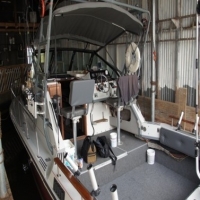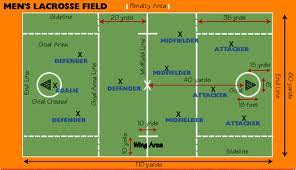Worldwide, squid are a popular recreational fishing target and also an important commercial species. Although the species of squid differ slightly depending on where in the world you are, the methods used to catch them are similar.
Here in southern Australia, the Southern Calamari is the most plentiful and popular species by far. They don’t grow very large, with anything over 3 kilograms considered large. However, they taste great and young and old alike spend many hours fishing for them from jetties, rocks and boats.
Years ago, squid were not specifically targeted by many anglers; their eating qualities were not very well known and, let’s face it, they are not the prettiest looking creatures. Fisherman would catch the odd one now and then and use them as bait for more desirable fish species.

That all changed when immigrants from the Mediterranean region introduced Australians to the culinary delights of calamari rings and salt and pepper squid. This coincided with the arrival of Yozuri Squid Jags, which were specifically designed to catch squid. The squids popularity since has never faltered and quite a few anglers now spend more time fishing for squid than they do anything else.
Initially there were two types of squid jags used. One was a small, cylindrical, coloured piece of plastic with two sets of barbless spikes at the bottom. This was cast out and retrieved in a stop start, jerky motion; or if in deep water, it could be dropped down to within a couple of feet of the bottom and jigged up and down. The squid apparently though it was an injured fish or prawn and would engulf the jag in its tentacles and, hopefully, become stuck on the barbs.
The other jag was simply a piece of wire with a row of barbless hooks at the bottom. The wire was baited with a small fish and this was lobbed out under a float to bob around just above the weed beds or reef.
Both jags accounted for many squid and the fish baited jags are still used frequently today. The small plastic jags though have largely been replaced by the Yozuri type jags which are fished in a similar fashion.
The Yozuri or prawn style jags (Yozuri were the first makers of the prawn style jag and most are still referred to as Yozuris here in South Australia although many different companies now make this style of jag) are meant to represent a prawn, one of the squid’s favourite prey. They are superbly weighted things, available in many different colours. They have two rows of barbs right at the tail, with some designs having a set of three prongs on the back of the lure. (If you have watched squid attack, quite often they attack from the side, using their tentacles to wrap around the middle of their prey – these prongs are designed to snag the tentacles in this situation).
These lures used to be available in one size only. It was a fairly large lure. Now though, the squid are a little more cautious than they used to be, especially in heavily fished areas. The lures now come in much smaller sizes which the squid find hard to resist.
Colour of the lure doesn’t seem to be all that important. Some anglers swear by green or blue, others by red and white and some won’t use anything other than bright pink or orange. One of the essentials for catching squid is clear water; one look at the squid’s eyes will indicate they are sight predators, so the squid will be able to see your lure no matter what colour. Having said that though, I have noticed in one particular area I fish, that green lures work very well, with blue a close second. Yet at a jetty not 20 kilometres away the red and white out-fishes the green nearly every time.
The prawn style lures can be fished in a few different ways. The most popular is to cast them out over the weed beds or reef and then slowly retrieve them. If there are any squid around, you will very likely hook them or, at the very least, you will see them following your lure. The retrieve can be varied a bit by a little stop start action and maybe a jig or too.
If the water is very deep, or there is a strong tide running, the lures can be fished above a sinker. They can be cast or lowered to the bottom and jigged up and down. A slight variation to this method is to fish the lure under a float and let it drift around over the weed beds. When you see your float go under or move across the surface, a squid is likely to be the culprit. Fishing them under a float is a favoured method of anglers whilst they fish for something else, hoping to pick up one or two squid as a bonus.
Whichever method you use, these prawn style lures are probably one of the best and most reliable ways to catch a few squid.
You can combine a couple of methods too to increase your chances of success. Squid love small fresh fish, so it makes sense to use this as bait if you can. You need two lines for this method; a rod or handline will do. Tie a fresh dead fish to the end of your line and cast it out so it settles lightly on the bottom, or just sits floating in the tide close to the bottom. Don’t put any hooks on this line and use only a minimal amount of weight. Attach a prawn style jag to your other line, but don’t cast it out, just keep it next to you ready to go.
Watch the line baited with fish. If a squid grabs it, it will be pulled tight. The squid will feel like you’ve hooked a heap of weed. Wind in the line very slowly. The squid will usually hang on right up to the surface. When you have the squid as close to the surface as you can get him, pull the fish away from him and throw the prawn style jag in. Almost always, the squid will swim straight over to your jag and grab it without hesitating. It will become impaled on the barbs and then it’s just a matter of hauling it in.
When selecting a spot to fish, look for extensive weed beds close to reefy and rocky areas. Squid use this cover as camouflage for protection and for hunting. Fishing over clear, sandy bottom is no good. It does not provide the squid with any cover and most fish like squid to eat as much as we do.
Depending on the size of the squid, you don’t need that many to provide a nice feed of calamari rings so always be aware of how many you have caught. There are strict bag and boat limits here, but these limits are quite generous.
When squid are about in numbers, they will compete for food and there are extremely aggressive. In these situations, you will catch a few in a very short space of time before they disappear. They will return though, so don’t lose patience. If you hook a squid and it squirts its ink, then it usually will not return to have another go at the jag.
Kids love catching squid. They are fascinated by their changing colour and ink squirting abilities. The areas in which squid are caught are often spectacular, unspoilt coastal areas, which is an added bonus for the kids and they can explore all they like.
Catching squid is not difficult but they are not as numerous as they once were. It’s good fun though and there a far worse ways to spend a morning or afternoon.

A Practice on Small Group Defending

New Hockey Ground Player Positions.

Copyright © www.mycheapnfljerseys.com Outdoor sports All Rights Reserved